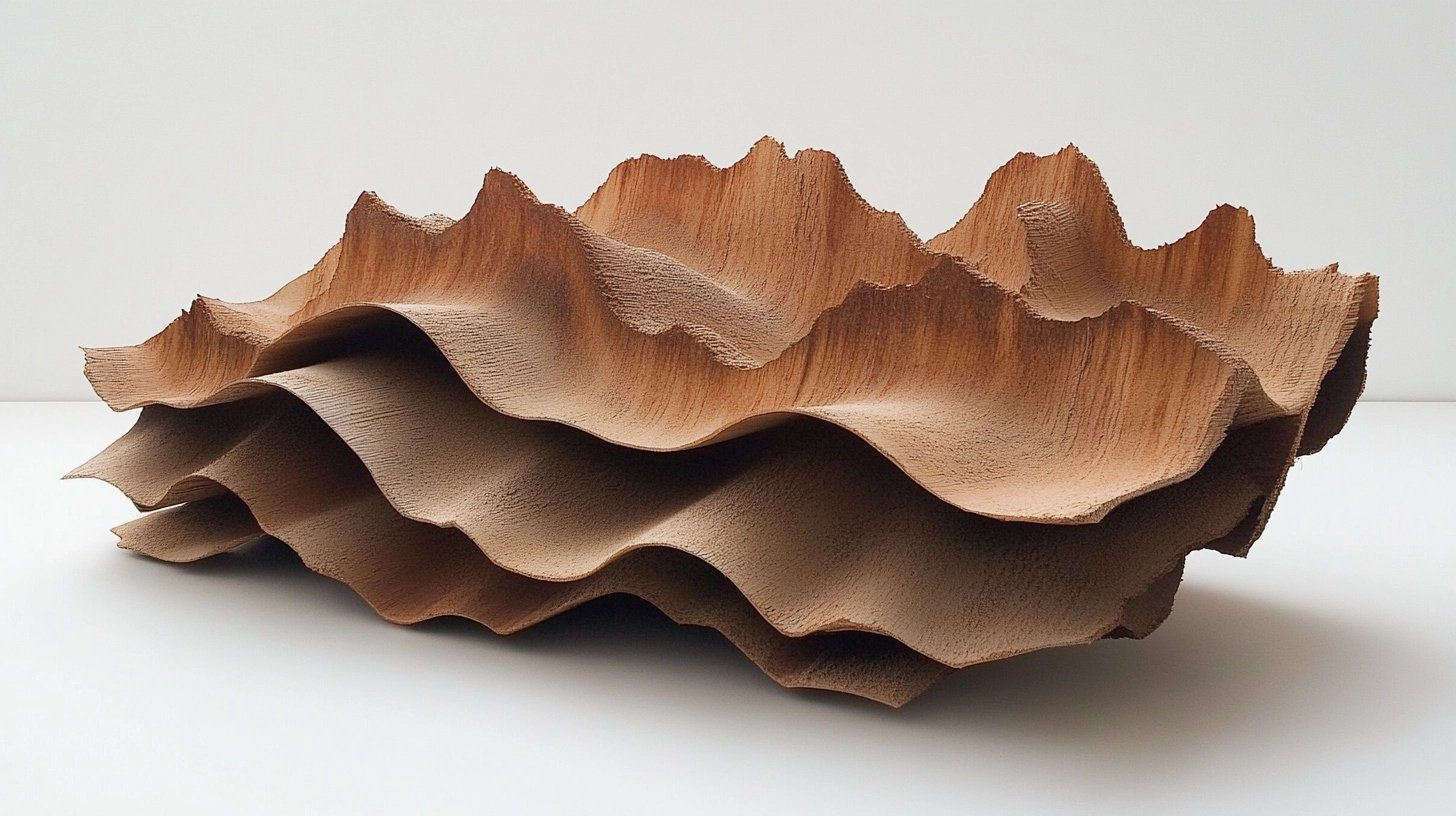
By Marianne Ehrhardt, Kunst und Kultur Journal, Bern, Switzerland
“Topographies of Truth: Gerald Schumpter’s Erosion of Accusation”
Bern’s artisan-turned-artist Gerald Schumpter has unveiled his latest conceptual work, Topography of Accusation, at the modest but fiercely intellectual Galerie Oblique. It’s a rare blend of brute materiality and fragile vulnerability, created from one of the humblest tools of labor: sandpaper. But this is no mere exercise in texture or craft. Schumpter, a carpenter by trade, has taken his lived experience—a wrongful accusation of theft—and transmuted it into a layered metaphor of erosion, identity, and redemption.
At first glance, the piece, with its jagged topography of meticulously glued layers of sandpaper, might appear cold, mechanical even, like a geological survey model. But closer inspection reveals its deeply human core. The layers of sandpaper—coarse at the base, progressively finer as the form rises—create a landscape that is both tactile and symbolic. Each stratum tells a story of friction, wear, and gradual revelation, echoing Schumpter’s own words that “accusations are like sanding wood; they grind away at you until something is exposed, whether or not it’s the truth.”
SynthoGraphs by STChM (PartnerCode-P001-12)
The centerpiece of the work is a sharp, deliberate cut slicing diagonally across the topography—a violent scar that Schumpter describes as the “moment of rupture.” This, he explains, represents the moment his neighbor accused him of stealing a bench saw—a tool essential to his livelihood. The accusation, baseless but persistent, disrupted his life and reputation in his small Bernese community. The cut is raw and unapologetic, a stark contrast to the meticulous layering of the rest of the piece. It’s a wound that never quite heals, even as the layers around it attempt to smooth over the damage.
SynthoGraphs by STChM (PartnerCode-P001-12)
Contours of Silence
Dimensions: 3.0m (H) x 2.5m (W) x 1.2m (D)
Weight: 620 kg
Layer Count: 2,400 layers of sandpaper
Material Details:
Sandpaper (coarse to ultra-fine, grit range 60-600)
Embedded artifacts: steel file fragment, brass hinge
Schumpter’s genius lies in his use of material. Sandpaper, often associated with refinement and precision, becomes a metaphor for how repeated actions—whether sanding wood or enduring scrutiny—both shape and wear down. As viewers move around the piece, the light catches the ridges and contours, casting shifting shadows that mimic the fleeting nature of doubt and truth. Hidden within the layers are fragments of tools: a splintered saw blade, rusted screws, and even fine wood shavings. These artifacts, barely visible, seem to whisper of the artist’s profession, integrity, and the craft that was called into question.
SynthoGraphs by STChM (PartnerCode-P001-12)
Fault Line of Trust
Dimensions: 1.5m (H) x 1.2m (W) x 0.8m (D)
Weight: 250 kg
Layer Count: 1,100 layers of sandpaper
Material Details:
Sandpaper treated with linseed oil for a glossy finish
Embedded artifacts: fragments of an old carpenter’s rule
There’s also a quiet but cutting humor in Schumpter’s work. One fragment of sandpaper, carefully exposed, is inscribed with the faint words, “Was ist der Wert eines Werkzeugs, wenn man das Vertrauen verliert?” (“What is the value of a tool if trust is lost?”). This rhetorical question lingers, much like the accusations against him, a reminder of how easily reputation can be worn away.
The Friction of Doubt
Dimensions: 2.4m (H) x 2.0m (W) x 0.9m (D)
Weight: 480 kg
Layer Count: 3,950 layers of sandpaper
Material Details:
Sandpaper with hints of natural dyes for tonal gradients
Embedded artifacts: rusted screws, a bent chisel tip




